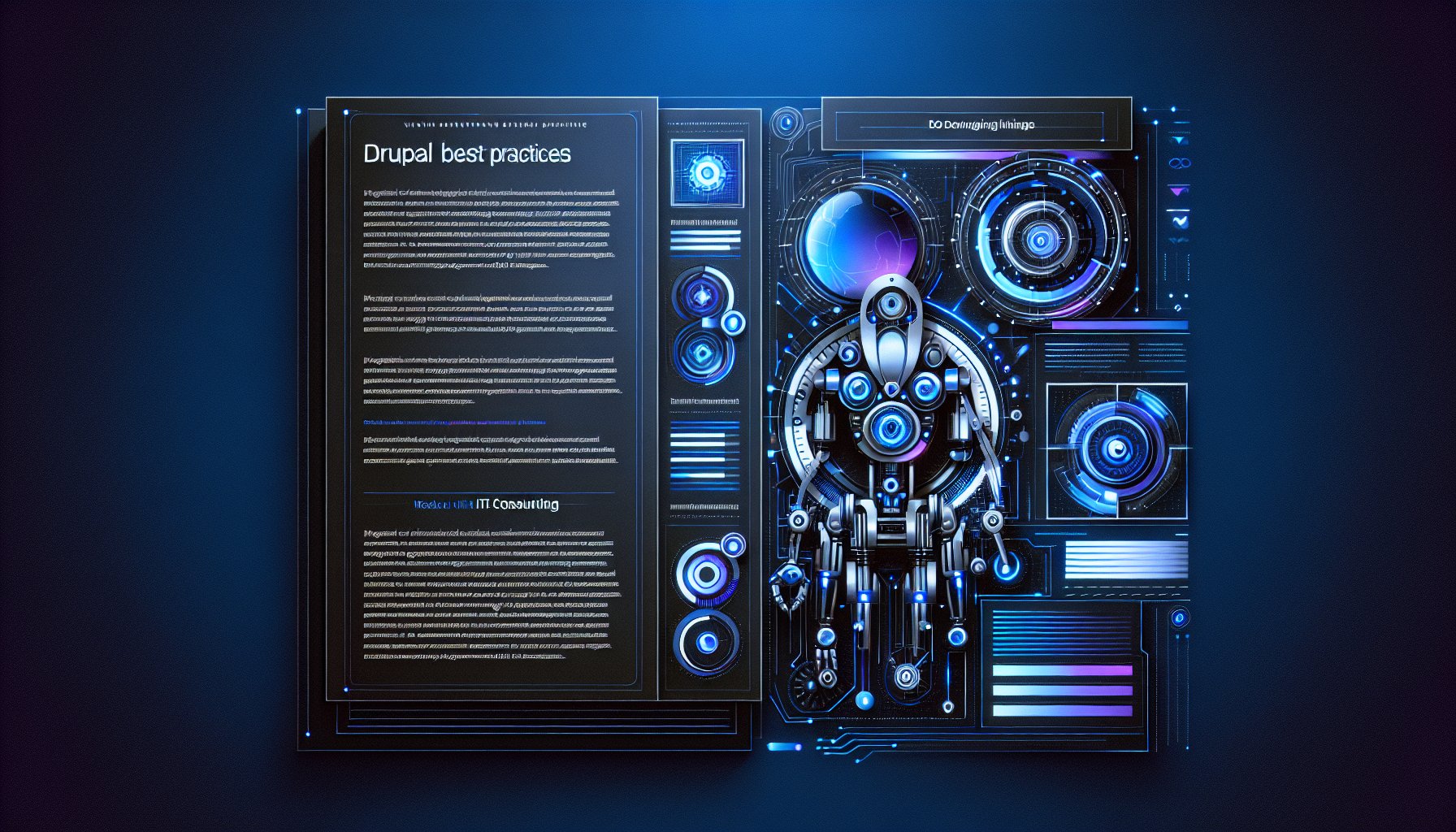Introduction
Drupal has always been a cornerstone of robust web development, and as we continue to push forward into the future, it's crucial to stay abreast of the latest trends and best practices. In this post, we'll delve into the most innovative Drupal best practices for 2025 and beyond.
Drupal 9: The New Standard
Drupal 9 is the most advanced, feature-rich version of Drupal to date. With a focus on backward compatibility and feature deprecation, Drupal 9 offers a seamless upgrade experience from Drupal 8. It also has optimized performance and enhanced security. Therefore, the first best practice is simple: If you’re not using Drupal 9, it’s time to upgrade.
Decoupled Drupal
Decoupled Drupal has become the standard for many Drupal developers. This approach separates the front-end and back-end, allowing developers to create rich user interfaces using modern JavaScript frameworks like React or Vue.js, while still leveraging Drupal's powerful content management capabilities.
Embrace Symfony and Twig
Drupal 9 has deep integrations with Symfony and Twig, and making full use of these tools is essential. Symfony components provide a solid foundation for Drupal, whereas Twig offers a powerful, flexible templating system. Learning and understanding these tools can significantly enhance your Drupal development process.
Automated Testing
Automated testing is a non-negotiable practice in modern development. Drupal 9 provides excellent support for automated testing with PHPUnit as the chosen testing framework. Regularly running automated tests helps to catch issues early and ensures high-quality, reliable code.
Continuous Integration
Incorporating Continuous Integration (CI) into your development process helps in automating the testing and deployment of your Drupal applications. CI tools like Jenkins or Travis CI can automatically build, test, and deploy your Drupal site whenever changes are made, ensuring constant delivery of quality software.
Embracing the API-First Approach
With the rise of headless CMS trends, Drupal 9's API-first approach is more significant than ever. This approach allows Drupal to serve as a central data hub for all your digital applications, providing a seamless integration point for mobile apps, IoT devices, and third-party APIs.
Conclusion
Staying current with Drupal best practices is essential for harnessing the full power of this versatile platform. By embracing Drupal 9, decoupled Drupal, Symfony, and Twig, implementing automated testing and CI, and leveraging the API-first approach, developers can create robust, future-proof digital solutions. As we move forward, these practices will no doubt continue to evolve, but for now, they represent the cutting edge of Drupal development.
Keep an eye on the future, and remember: the best way to predict it is to create it. Happy coding!